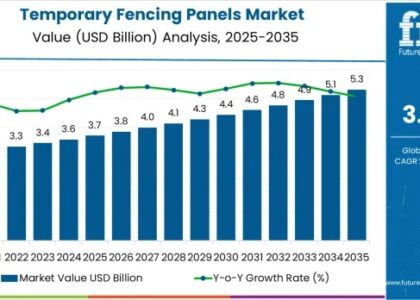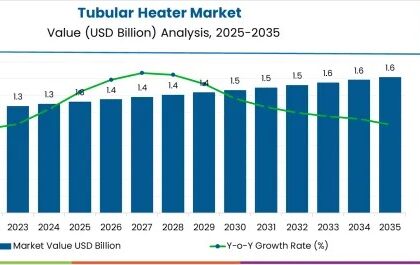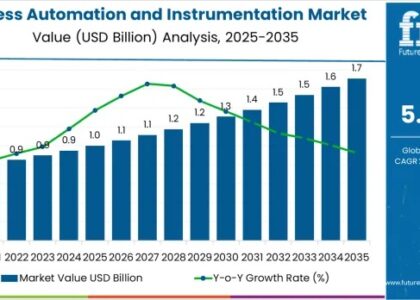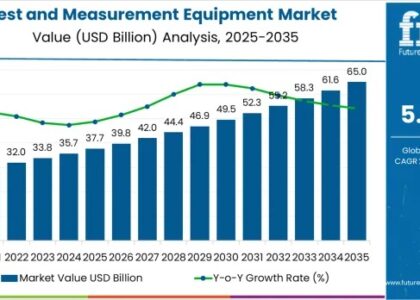Stamped, forged, and cast components are the foundation of every major industry—from aerospace to electric vehicles to defense. And right now, that foundation is shifting fast. Globally, the metal stampings, forgings, and castings market is in the midst of an aggressive boom. But while the world leans into this momentum, the United States seems stuck in neutral.
According to Future Market Insight, the by 2025, the global market for metal stampings, forgings, and castings is expected to reach a value of around USD 522,489 million. By 2035, at a compound annual growth rate (CAGR) of 5.6%, it will reach around USD 901,234 million.
Request For Sample Report: Elevate Your Industry Intelligence with Actionable Insights
https://www.futuremarketinsights.com/reports/sample/rep-gb-17258
Behind the Growth: A System on Shaky Legs
Let’s not pretend all is well. This isn’t just a growth story—it’s also a warning. A market ballooning in value means little if the country at its center is hollowing out.
American manufacturing is aging. Not just metaphorically—literally. Machinery that should have been replaced a decade ago is still running double shifts. Skilled labor? Shrinking. Toolmakers, machinists, and metalworkers are retiring faster than they’re being replaced. And the few new entrants? Often trained on equipment that belongs in a museum.
FMI’s report points to expansion. That’s great. But expansion without modernization is just scaling dysfunction.
Meanwhile, Asia Is Eating Our Lunch
While the U.S. wrestles with labor shortages and underfunded plants, countries like China and South Korea are sprinting ahead. Their operations are streamlined, subsidized, and integrated with cutting-edge tech. Their output isn’t just cheaper—it’s faster, cleaner, and more consistent.
America talks about industrial independence. But when it comes to critical components—jet engine housings, automotive chassis, turbine blades—we still rely heavily on foreign suppliers. That’s not just bad policy. It’s dangerous.
Browse Full Report Here: https://www.futuremarketinsights.com/reports/metal-stampings-forgings-and-castings-market
So What’s Going Wrong?
Several things. And none of them are new.
First, our equipment is obsolete. Walk through many U.S. fabrication shops and you’ll find machines older than the engineers operating them. That’s not innovation. That’s institutional rot.
Second, workforce development is a joke. For all the talk about “bringing manufacturing back,” there’s shockingly little effort to train the next generation of skilled tradespeople. FMI calls attention to this gap—and they’re right to.
Third, we’re unprepared for volatility. Raw material shortages, supply chain disruptions, and global price shocks hit U.S. firms harder because we haven’t built resilience into the system. That’s not just a missed opportunity. It’s a self-inflicted wound.
Fourth, the industry is terrified of change. Automation, AI-driven casting, predictive maintenance—they’re not future ideas. They’re current necessities. And yet, adoption in U.S. metalworking remains painfully slow.
Latest Manufacturing Equipment Reports: https://www.futuremarketinsights.com/industry-analysis/manufacturing-equipment
Time to Wake Up—or Shut Up
If the United States wants to lead in electric vehicles, green infrastructure, and national defense, it must own the means of production. That means investing—not just in factories—but in people, machines, and ideas.
The way forward is clear:
- Modernize every plant that matters. Outdated presses and mold lines are costing us time, money, and credibility.
- Train the workforce like we mean it. Not with lip service. With serious federal and private investment in vocational education and hands-on apprenticeships.
- Rebuild the supply chain—domestically. We need to stop acting surprised every time a foreign disruption shuts down an American plant.
- Go green and get efficient. The rest of the world is combining sustainability with profitability. We should be leading that charge, not trailing it.
Final Word: There’s No Innovation Without Fabrication
Here’s the brutal truth: you can’t build wind turbines, electric trucks, or hypersonic missiles with PowerPoints. You need forged alloys. You need stamped panels. You need precision-cast parts. In short—you need metal.
FMI’s projections should be a rallying cry. This market is expanding rapidly. The question is: will the U.S. expand with it—or watch from the sidelines?
Because if we don’t act fast, our factories won’t just fall behind—they’ll fall silent. And in a world built on metal, silence is failure.






